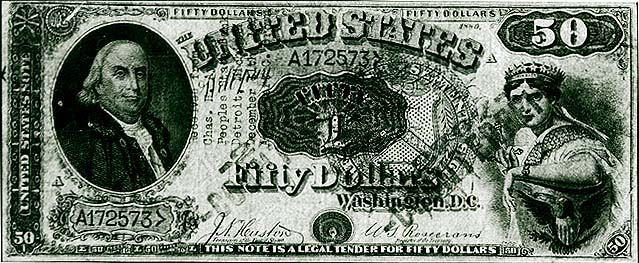The Unintentional Artist
Over the course of his life, Emanuel Ninger created a reported 700 works, each of which took weeks to craft. Using a camel’s hair brush, ink, and bond paper, he’d draw up small items which, when he was alive, others regularly valued at $50 or $100 apiece. A few dozen of his pieces made their way into the hands of art collectors, but most of Ninger’s creations have been lost to antiquity. Those which remain in existence are rarely, if ever, made available by their owners.
It sounds like the typical struggling artist tale: grinding out a living over many, many years; making little headway economically, given the effort put into the artwork; perhaps never finding appreciation and even then, doing so only after death. But Emanuel Ninger was not the typical artist. In fact, it is likely that he never considered himself an artist at all. He was, if anything, a criminal.
Emanuel Ninger was a counterfeiter.

From around 1882 until his arrest in 1896, Ninger produced hundreds of fake U.S. banknotes like the one seen above, “earning” an estimated living of about $300 a month, a princely sum in that era. His bills were by no means perfect examples of the real McCoys — the paper wasn’t quite right, the designs intentionally inexact (but familiar enough to not provoke a quizzical look), and the words “Engraved and printed at the Bureau of Engraving and Printing” were absent. (Allegedly, he’d later state that the final omission was because “they didn’t make them.”) But these differences were hardly obvious. By the time a bearer of a Ninger Note, as they’d become known, figured out that he was the butt of the ruse, the bill was likely two or three people removed from the forger himself.
Ninger’s work, while income for him and his wife, even though fraudulent, piqued the interest of art collectors and tastemakers of that world. According to American Heritage magazine, an 1891 New York Times article stated that “nine persons out of ten would take it for the genuine article” and “the one who made it must have been an expert of rare ability,” while an 1892 Times pieces called the notes “a marvelously fine piece of work [ . . .] the coloring is excellent, the design clearly reproduced [ . . .] The paper is good and has almost the right feel.” And those descriptions turned out to be prescient. Ninger Notes, due in part to their high face value (fifty dollars in 1892 would be worth roughly $2,000 today), ended up in the hands of high net worth individuals, many of whom started to treat the bills as collectable works of art.
In 1896, the artist’s identity was unmasked. Ninger attempted to pass one of his fake fifties to a barkeeper, asking for change — he claimed he needed small bills and coins to pay farmhands. He placed the faux money on the counter and left, thinking nothing of it. But soon after, the ink started to run, and the victim of his crime alerted the authorities. Ninger pled guilty to counterfeiting, spent six months in prison, and paid a fine of $1 (assumedly in real money).
While some bills likely survive to this day — a testament to the artistic value of Ninger’s hand-drawn creations — finding one is nearly impossible. In 1909, the U.S. required that counterfeit notes be turned in; this edict is in power to this day.Therefore, any collector who still owns a Ninger Note does so unlawfully, running the risk of significant fines. Nevertheless, according to the above-cited American Heritage article, a few dozen still remain in existence — and are valued at amounts much larger than the $50 or $100 on their faces.
Bonus fact: Dimes and quarters (U.S. coins, that is) have ridges on their edges — dimes have 118, quarters 119. Why they have that many has been lost to antiquity, but why they have ridges at all is something we know. As explained by mental_floss, coins used to be made of precious metal — silver, in this case — and fraudsters would clip the coins edges to preserve their value as currency, all while keeping some of the silver. The ridges prevented this. When coins moved to less valuable metals, the old molds were retained, so we still have ridged coin edges.
From the Archives: Paper Trail: How your photocopier prevents you from making counterfeit money (and how Photoshop does, too).
Related: A totally real, not counterfeit $100 trillion bill. (It really is legit, and explained in an earlier Now I Know, here.)

Leave a comment